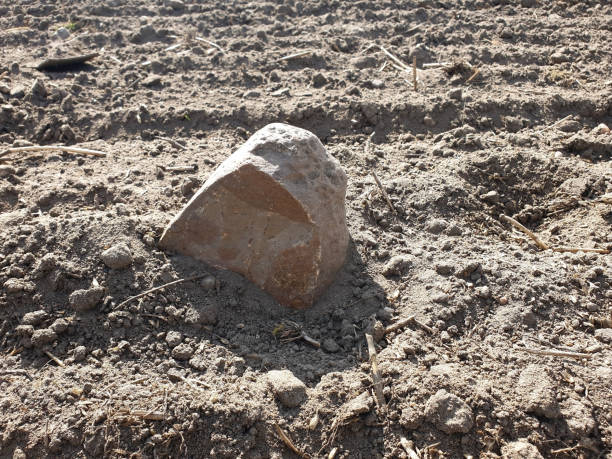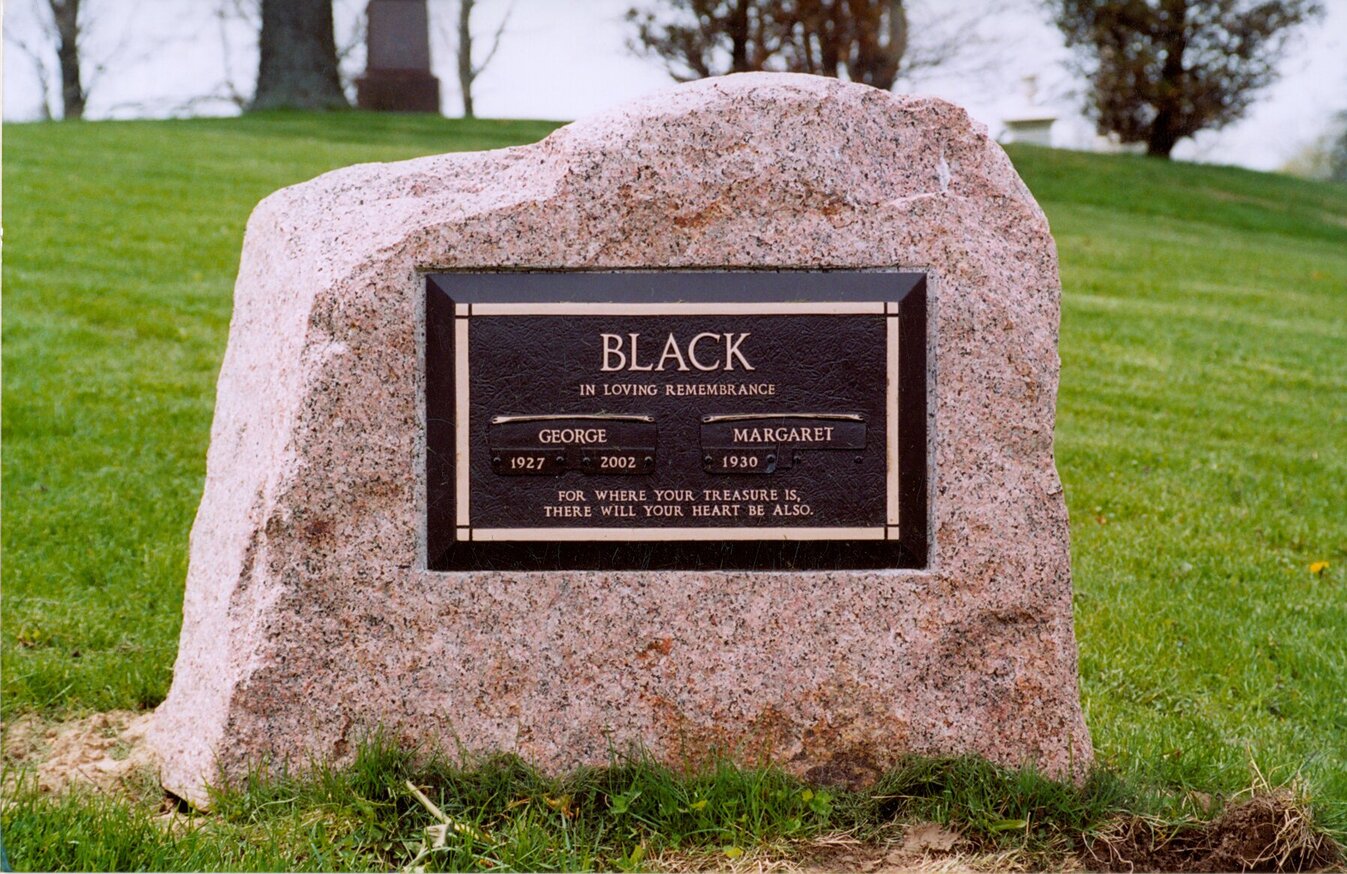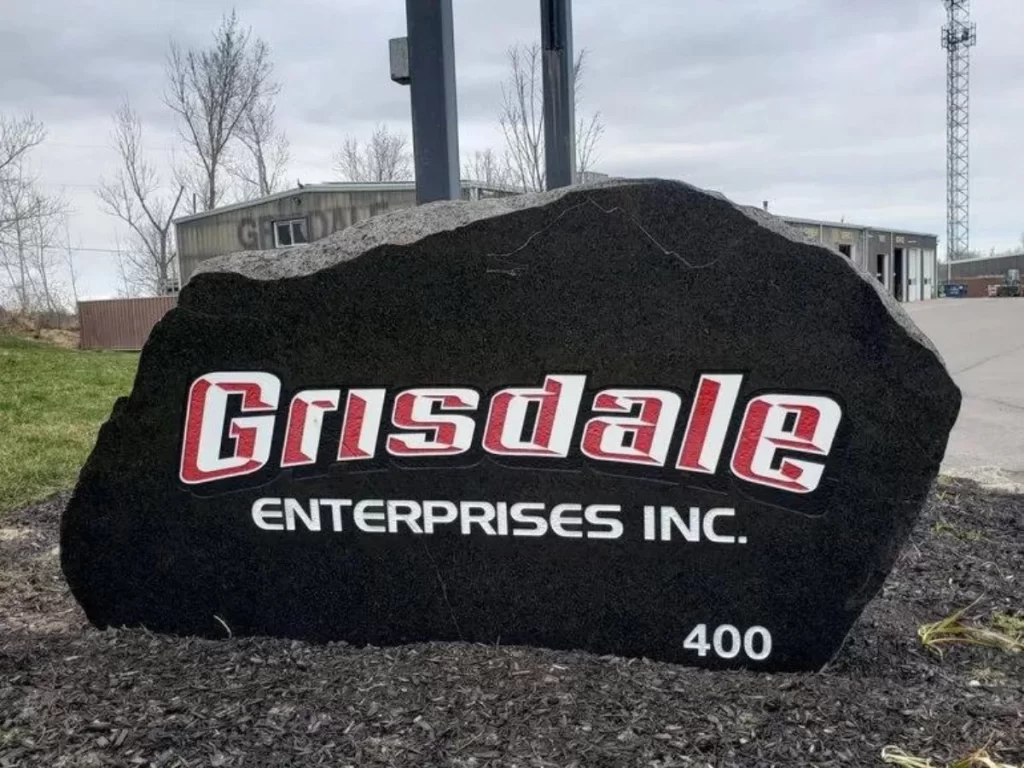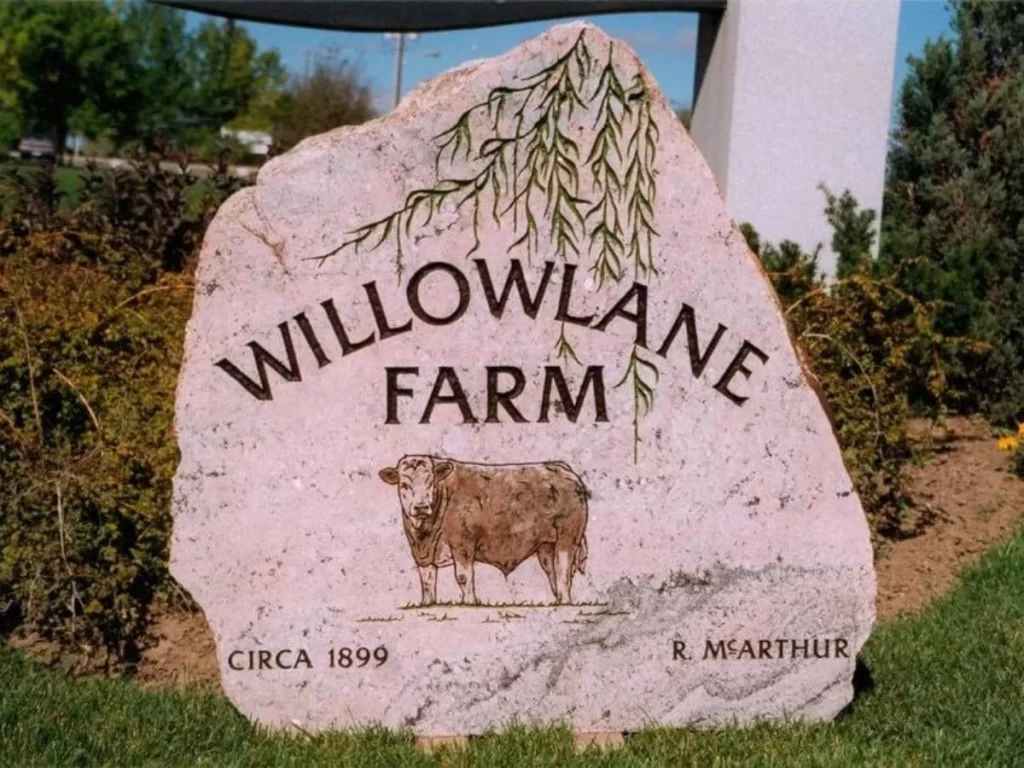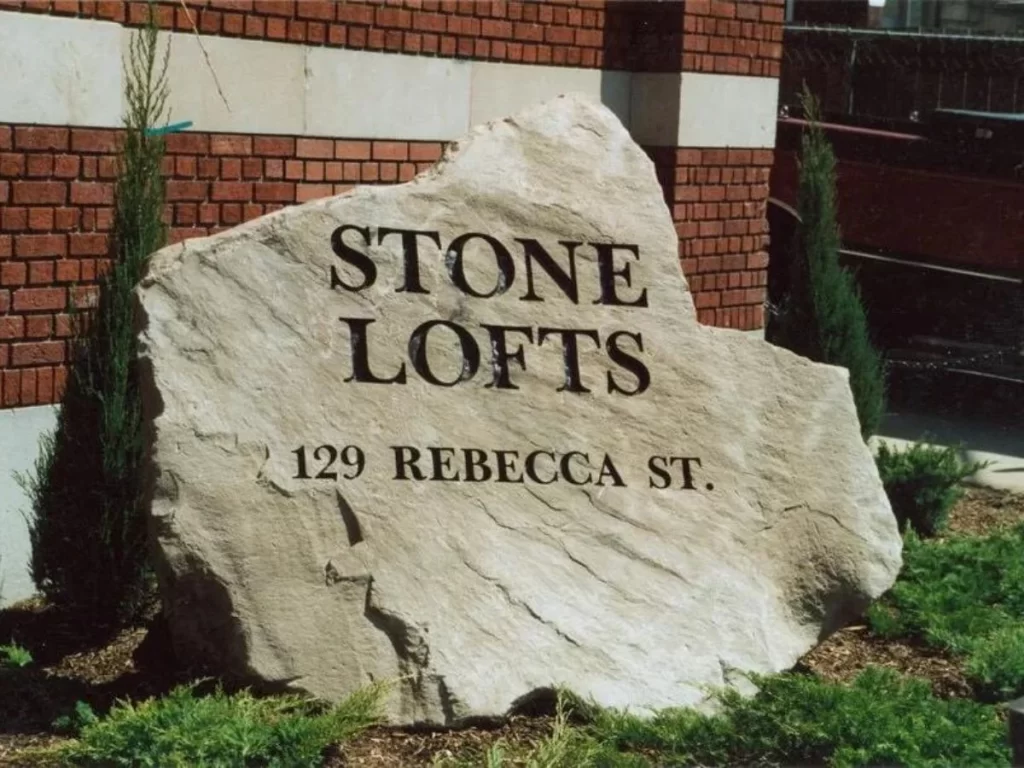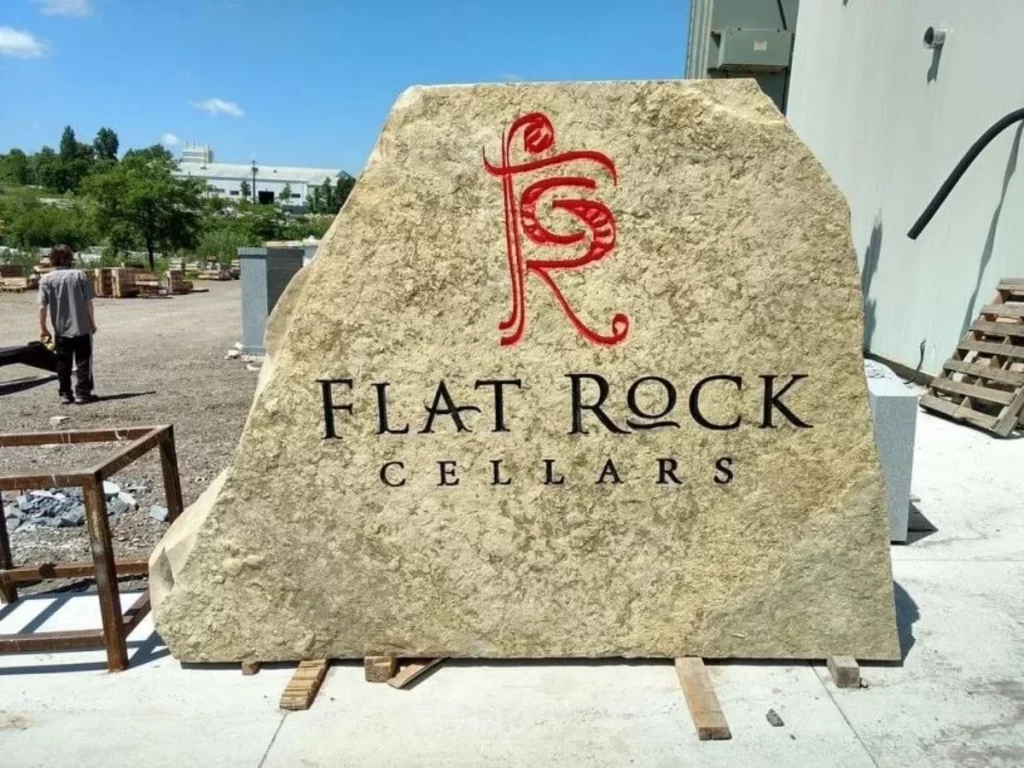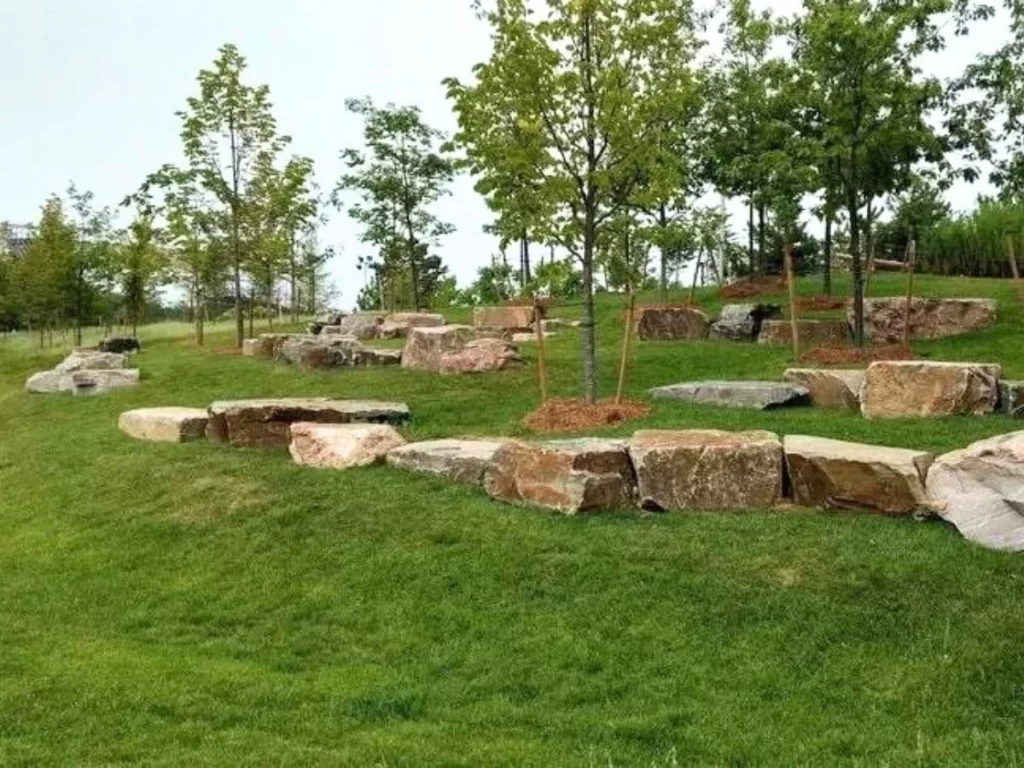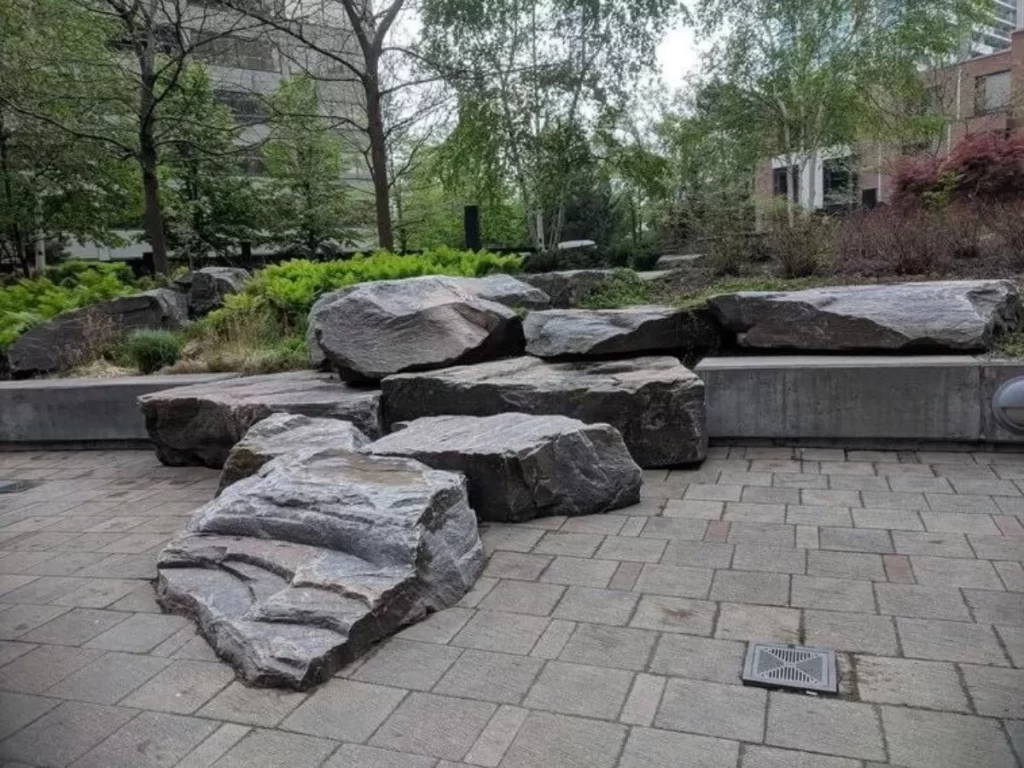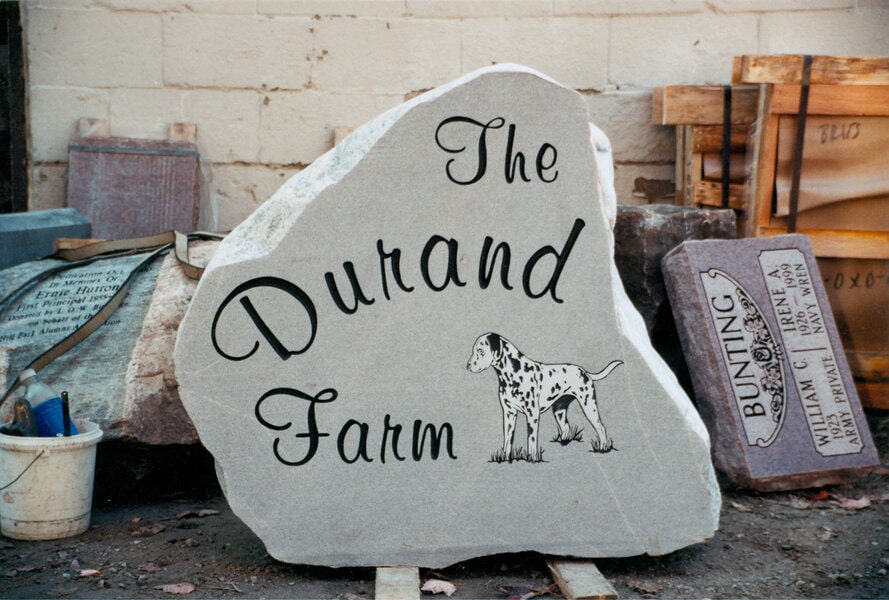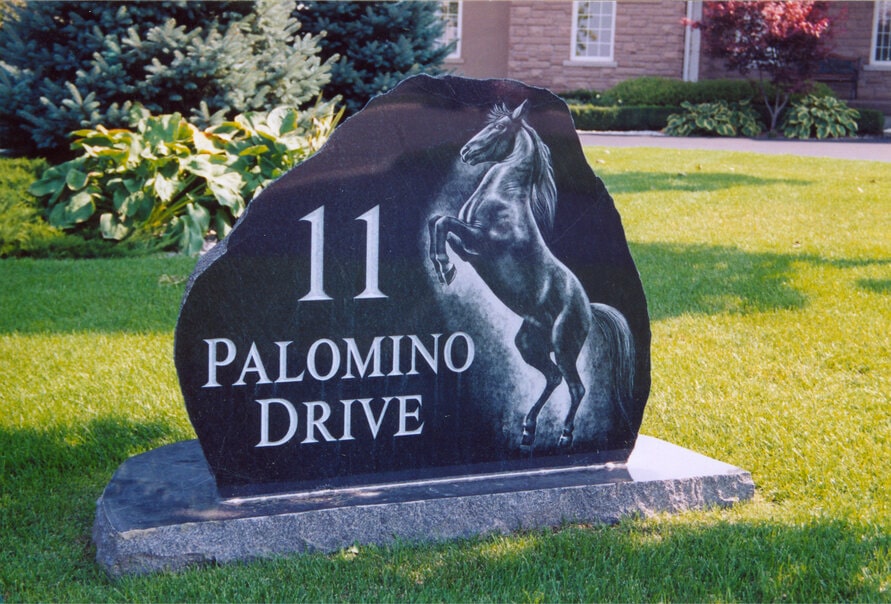Turning Fieldstones into Masterpieces
From creating striking landmarks that capture the essence of a location, to constructing memorials that blend solemnity with natural beauty, the use of natural elements such as boulders and fieldstones has gained significant popularity.
Valued not only for their aesthetic appeal, rustic charm and enduring strength, fieldstones have the power to transform spaces with their functional benefits too.
In this blog, we’re answering all your questions about fieldstones and showcasing how this versatile medium can be used to elevate landmarks, memorials, and architectural projects. We’ll dive into our process of how we turn fieldstones into public monuments – and share with you some of our inspiring real-life examples.
But, before we look at the use cases, it’s important to understand the differences between boulders and fieldstones.
Although sometimes used interchangeably, they are actually not the same thing. So, let’s start by clarifying any misunderstandings, and learn the distinctions between these two types of rock…
What is a fieldstone?
A fieldstone is a naturally occurring rock found on the surface of fields or in the soil. Unlike other rocks, fieldstones are not mined, and are generally smaller, smoother and more irregular in shape compared to quarried stones or boulders. This irregularity in shape and size, shaped by natural processes over time, is a defining characteristic of fieldstones. Their appearance, including color and texture, depends on the local geology, giving each stone a unique and rustic aesthetic.
Fieldstones are a popular choice in construction and landscaping, commonly used for building stone walls, fireplaces, foundations, and for decorative purposes in gardens.
What is a boulder?
A boulder is a large, smooth, and rounded rock, typically larger than 10 inches in diameter. Boulders can be formed naturally through weathering and erosion, or artificially through quarrying processes. They are commonly found in diverse landscapes such as riverbeds, beaches, and near cliffs, and can vary in composition based on their geological environment.
In landscaping and architecture, boulders are used for aesthetic and functional purposes, such as creating natural barriers or as focal points in gardens.
How do boulders differ from fieldstones?
While both boulders and fieldstones are natural stones, prized for their rustic, aesthetic appeal, they differ in size, appearance, and typical applications. Boulders are larger and more rugged, often serving as prominent construction or landscape architecture features, while fieldstones are smaller, smoother, and used for a variety of smaller-scale projects.
Where do fieldstones come from?
Fieldstones originate from geological processes that span centuries. They’re composed of various minerals and showcase a rich palette of colours and textures that reflect the geological diversity of their origins.
Due to their inconsistent colour and shape, the look of a fieldstone varies significantly from that of quarried stone. The uniqueness of each piece is why everyone from nature-lovers to granite specialists, like us, love them!
What are fieldstones used for?
Fieldstones are often used for landscape purposes. In the right hands, this humble piece of rock (or geological marvel) can be transformed into an enduring work of art. Which is where our expert team at HGH Granite comes in. Breathing life into fieldstones and turning them into pieces of art that tell stories is our speciality.
How do granite specialists work with fieldstones?
Every creation begins with the raw fieldstone. Every stone has been weathered and worn by time, and as such, has its own character and history that inspires our in-house team of stone cutters.
The process of turning the rock into something new requires a balance of preserving the stone’s natural character while bringing out its hidden potential.
When selecting fieldstones to repurpose, we pay very close attention; inspecting for fractures and ensuring the dimensions are suitable for use.
For example, if we’re briefed with transforming a natural boulder into a cemetery memorial then, first, we need to ensure it will fit on its granite base; next, that the bottom joint will be stable enough, and, finally, that there’s enough room on the face of the stone to accommodate an inscription.
Once the fieldstone is cut with our diamond wire saw, we grade the stone based on the character we find. We then proceed with polishing or ‘steeling’ the face if requested.
Polishing brings out the colour in the granite, giving it a wet look – see the “Kraft” boulder, below. Meanwhile, a steeled, or sawn, surface dulls a variegated appearance and produces a clean slate. We picture it as a smooth canvas, upon which we can create any design – see “Rayner” boulder, below.
What does HGH Granite create with fieldstones?
Our fieldstone portfolio is rich and varied, covering religious monuments to public parks and architectural projects. Take for example…
Cemetery Monuments
In the quiet corners of cemeteries, our fieldstone monuments pay homage to lives lived. Each is crafted with skill and compassion by our in-house team and as such our pieces become special symbols of remembrance for loved ones.
Memorials
Nestled in the city of Hamilton’s Woodland Cemetery, and fashioned from a boulder, this Estonian memorial stands as a testament to the bravery of those who sought refuge in Canada during WWII. The fieldstone, carefully chosen for its character, became a canvas for honouring the resilience and spirit of the Estonian community. We’re really proud of it.
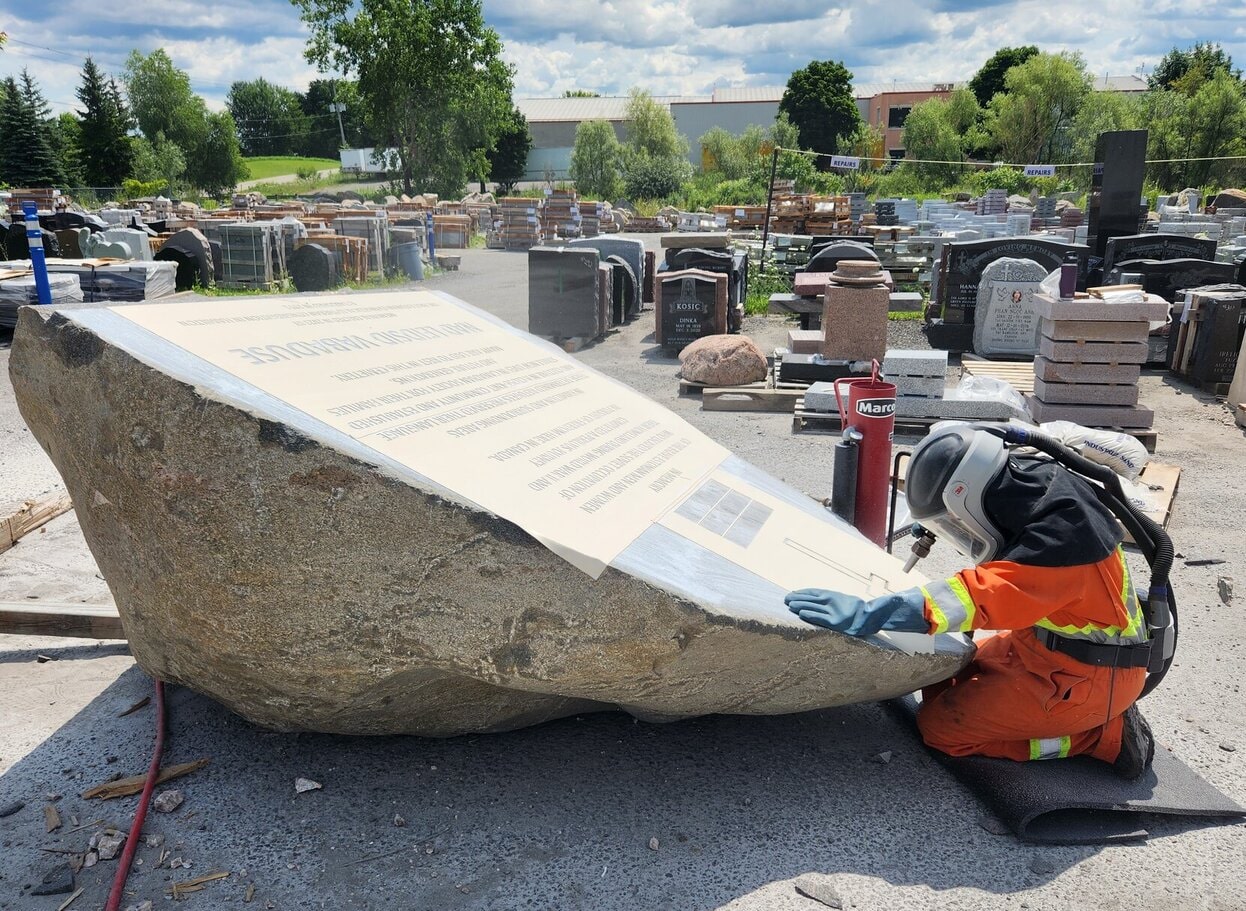
Signage
Venture beyond cemeteries, and you’ll find our fieldstone creations welcoming guests and customers alike to commercial businesses. Like the bold black signage we created for OK Tire in Dundas, ON, or the equally punchy sign we created for Grisdale Enterprises Inc at the same location. We love that these pieces blend nature with the brand/ business’s ethos, and existing look and feel.
Our signage portfolio is pretty expansive, so you’ll see our fieldstones in a range of diverse landscapes.
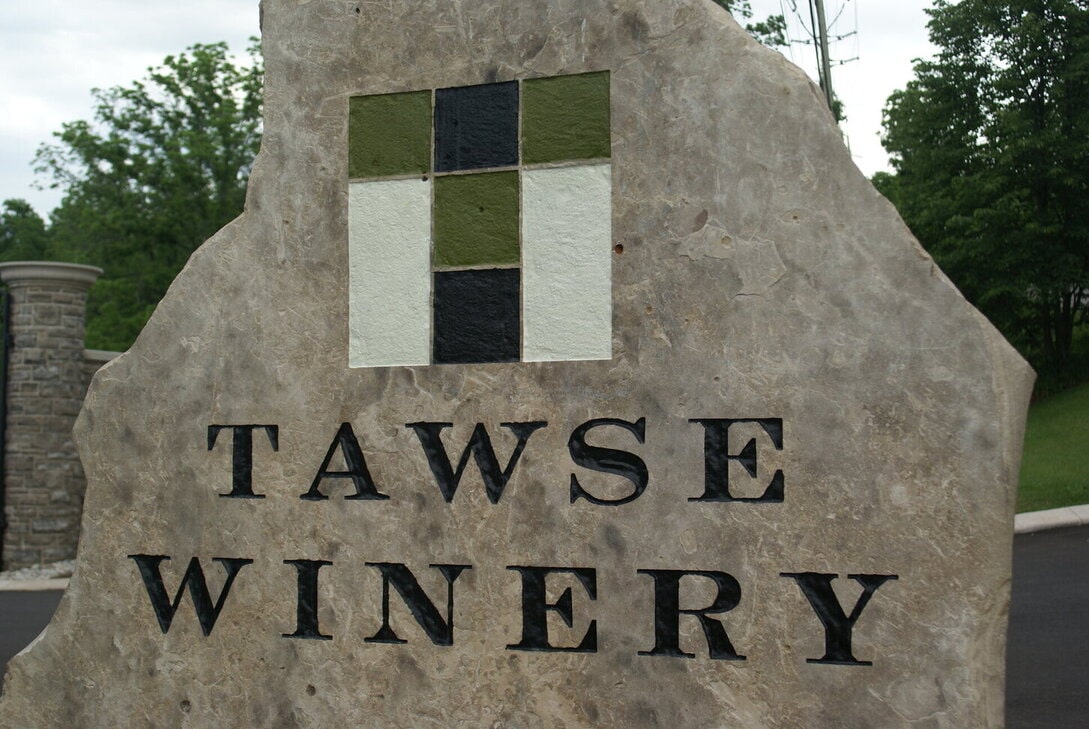
Stone signage stands proudly at Flat Rock Cellars and Stone Lofts, in Jordan, ON; and Willowlane Farm in Hamilton, ON.
We’ve also created pieces for public parks, country clubs, apartment buildings, villages and cemeteries (if you take a drive to the village of Glancaster, ON or visit St Paul’s Anglican Cemetery near Millbrook, ON you’ll be welcomed by signage created by an HGH Granite).
We have lots of experience creating residential signage, too. These pieces are commonly referred to as ‘address rocks’. Where fieldstones give homes a unique, personalised look.
As you can see, the possibilities are pretty endless!
Crafting stories from stone
In the hands of our skilled in-house artisans and craftspeople, fieldstones transcend the status of mere rock. They evolve into pieces that tell stories, pay tribute, and even welcome people inside.
Do you have any fieldstone projects in the pipeline?
We’d love to hear from you and discuss your vision. At HGH, we pride ourselves on sourcing the finest granite and providing the best service to our valued clients. Whether you’re working on a welcome sign, a timeless headstone, or a public architecture piece, our team – and their many years of expertise – is at your service!
Get in touch with us today.
